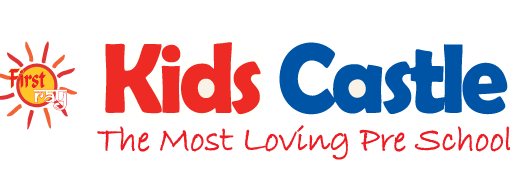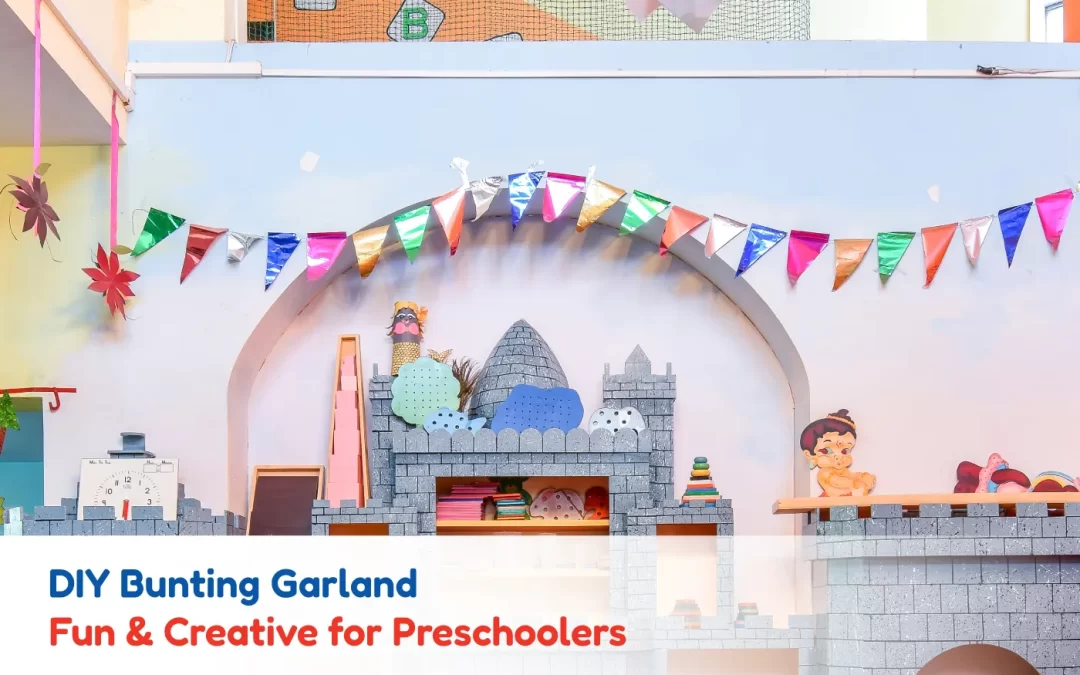Buntings, also known as bunting garlands, are more than just decorations—they are a timeless craft that brings color, charm, and personality to any space. Whether you’re sprucing up your home for a festival, creating a cozy, kid-friendly living room, or celebrating a special occasion, making buntings with your child is a fun-filled activity that combines creativity, learning, and cultural significance.
Let’s dive into this blog, which gives you creative ideas to decorate your home but also gives you a fun activity you can do with your child!
What is Bunting?
Historically, buntings originated as maritime flags used to signal ships. But they’ve since evolved into symbols of celebration, joy, and creativity.
Buntings are often made from paper, fabric, or other materials, and are hung across walls, doorways, or windows to create a festive atmosphere.
Today, buntings are a part of home decor, adding warmth to a nursery, kids room or even the living room. You can get very creative with buntings, and make decorative strings of flags, animal motifs, hearts or anything you choose.
Why Make Buntings with Kids?
Crafting buntings is more than just a fun pastime; it’s an activity packed with educational and cultural value. Here’s why it’s perfect for your preschooler:
- Enhances Motor Skills: Cutting shapes, threading string, and decorating flags are excellent ways to build fine motor coordination.
- Encourages Creativity: Kids can experiment with colours, patterns, and designs, boosting their creative instinct.
- Introduces Cultural Significance: Teach children about how buntings are used in festivals, national celebrations, and religious events, making them familiar with traditions of our country.
- Fosters a Sense of Achievement: Seeing their handmade decorations displayed in a prominent spot makes kids feel proud and valued.
DIY: How to Make a Kid-Friendly Bunting Garland
Materials You’ll Need:
- Colored paper or fabric scraps (old clothes work great for an eco-friendly option!)
- Child-safe scissors
- Glue stick or tape
- Markers, crayons, stickers, or stamps for decoration
- String, yarn, or ribbon
- Hole punch or a safe alternative
Step-by-Step Instructions:
- Pick a Theme: Start by deciding on a theme—like animal or vehicle motifs, letters of the alphabet to add an educational layer to the craft. For example, if you choose an alphabet theme, each flag on the bunting can feature a letter, helping preschoolers recognize and learn them.
- Cut Out the Flags: Help children cut out shapes such as triangles, circles, or even unique designs like cars, stars, or hearts. Encourage them to try cutting themselves using child-safe scissors—it’s a great way to improve hand-eye coordination.
- Decorate the Flags: This is where the real fun begins! Give kids markers, stickers, and crayons to decorate each flag. They can draw pictures, add glitter, or write their names. Use this step to teach simple lessons—like drawing patterns, matching colors, or counting shapes.
- Attach the Flags to a String: Punch two holes at the top of each flag and thread them onto a piece of string or ribbon. For fabric bunting, you can use glue to attach the flags to the string or pin it for a rustic touch.
- Hang it up: Once your garland is ready, let the kids decide where to hang it. Whether in their room, across a play area, or as part of a festive setup, seeing their creation displayed will make them proud
The Educational and Cultural Side of Buntings
In many cultures, buntings symbolize joy and celebration. In India, for example, mango-leaf torans are hung at doorways to invite prosperity,
while decorative buntings are used during festivals and weddings.
During the next festival, get your children involved in bringing the mango leaves and making the toran. Adding or pinning yellow and orange marigold flowers to the toran can make it artistic, festive, and fun!
Sharing these cultural connections with your preschooler can help them understand the broader significance of their craft.
Creative Ideas for a Kid-Friendly Living Room
Incorporating buntings into your home decor can make any space more playful and inviting. Here are a few ideas:
- Seasonal Themes: Create buntings for each season—like autumn leaves, snowflakes, or spring flowers—and hang them in the living room.
- Personalized Spaces: Let your kids create a bunting with their names or favorite characters to decorate their play area.
- Celebrating a Birthday – Making a bunting with ‘Happy Birthday’ can be a fun activity and also a creative gift.
- Interactive Learning: Use buntings to teach shapes, numbers, or alphabets in a fun and visual way.
Kid-Friendly Interior Design
Buntings are lightweight, safe, and incredibly versatile, making them perfect for kid-friendly interior designs. They add charm without taking up space and can be customized to match any theme. Plus, when children are involved in making them, it gives the decor a personal touch that no store-bought decoration can match.
Conclusion
Making buntings with preschoolers is more than just a craft—it’s a creative journey that combines learning, cultural appreciation, and family bonding. This activity is packed with fun and purpose. So, grab your craft supplies, spark your child’s imagination, and let the magic of DIY buntings transform your home and their hearts!

